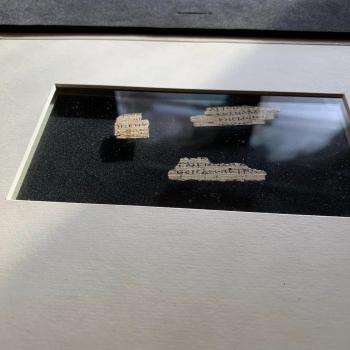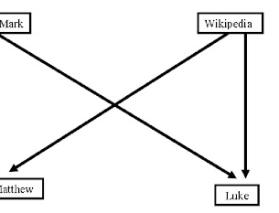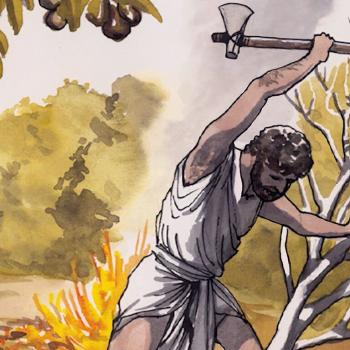I have rarely paid attention in the past to the way that Simon is referred to in Matthew 16. Once again I am forced to consider how frequently one can read the same text without failing to register certain details as significant. The term that is used there – Βαριωνᾶς – is striking, unique in the Gospels. It is clearly the Aramaic “son of Jonah,” and is perhaps most straightforwardly explained in terms of the author or his source remembering how Jesus referred to Simon. (The Peshitta had no trouble turning it back into Aramaic as ܫܡܥܘܢ ܒܪܗ ܕܝܘܢܐ).
Also striking is that the Gospel of John calls him “Simon (son) of John” (Σίμων Ἰωάννου).
In some circles of New Testament scholars, there is a tendency to ignore issues related to Aramaic. I suspect that this is partly because so many in the field of New Testament have studied Greek but not Aramaic, but also partly because of the attempt of some overzealous scholars to explain absolutely everything in terms of hypothetical underlying Aramaic. When so much of that is speculative, some of it seems wildly implausible, and all of it involves linguistic claims that one cannot verify, the urge to simply ignore is perhaps understandable. But that urge must be resisted, because in those places where the Aramaic rises visibly above the surface of the Greek text, it is demonstrably significant. And thus it is imperative that we also dig beneath that surface and explore additional possibilities.
For instance, the idiom “son of man” is an Aramaic one that means “human being” or “someone,” but is complicated by the fact that there is an intriguing figure who is referred to in this way in Jewish apocalyptic literature. One doesn’t need to consider it a title to consider it worth puzzling over. And so, for instance, given that saying “someone” while using this idiom could at times be an allusive self-reference, it has been proposed that Jesus was simply asking “Who do you say that I am?” But to the extent that the phrase could denote a specific apocalyptic figure, it might also be a different sort of question: “Who do people say is the ‘Son of Man’? “In other words, is the question about who people say Jesus is, or about who they think the figure is who is mentioned in Daniel 7 and the Parables of Enoch?
There are plenty of other examples. But let me return the attention of readers of this post to the place where we started, the presence of Βαριωνᾶ in the Greek text. How much attention have you paid to this detail and others like it? How significant do you think it is that the Aramaic vernacular in the place where Jesus was active emerges into view in moments like this? Is this best explained as a bit of eyewitness recollection, even if it reaches us second (or fifth or tenth or twentieth) hand? If so, it serves as a useful reminder that the flow of oral tradition and memory did not reach Mark and/or Q and then cease, but flowed into subsequent Gospels as well alongside written sources such as these.

















